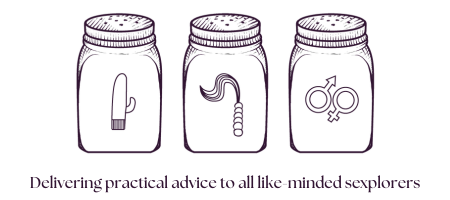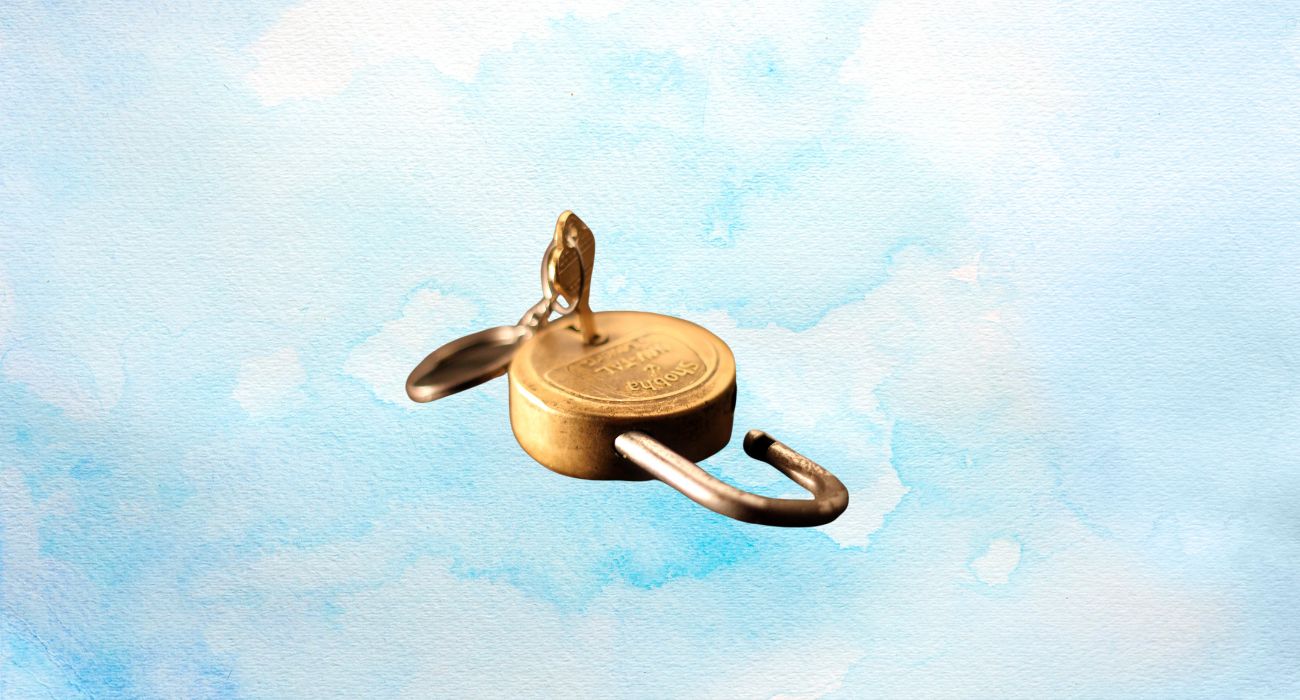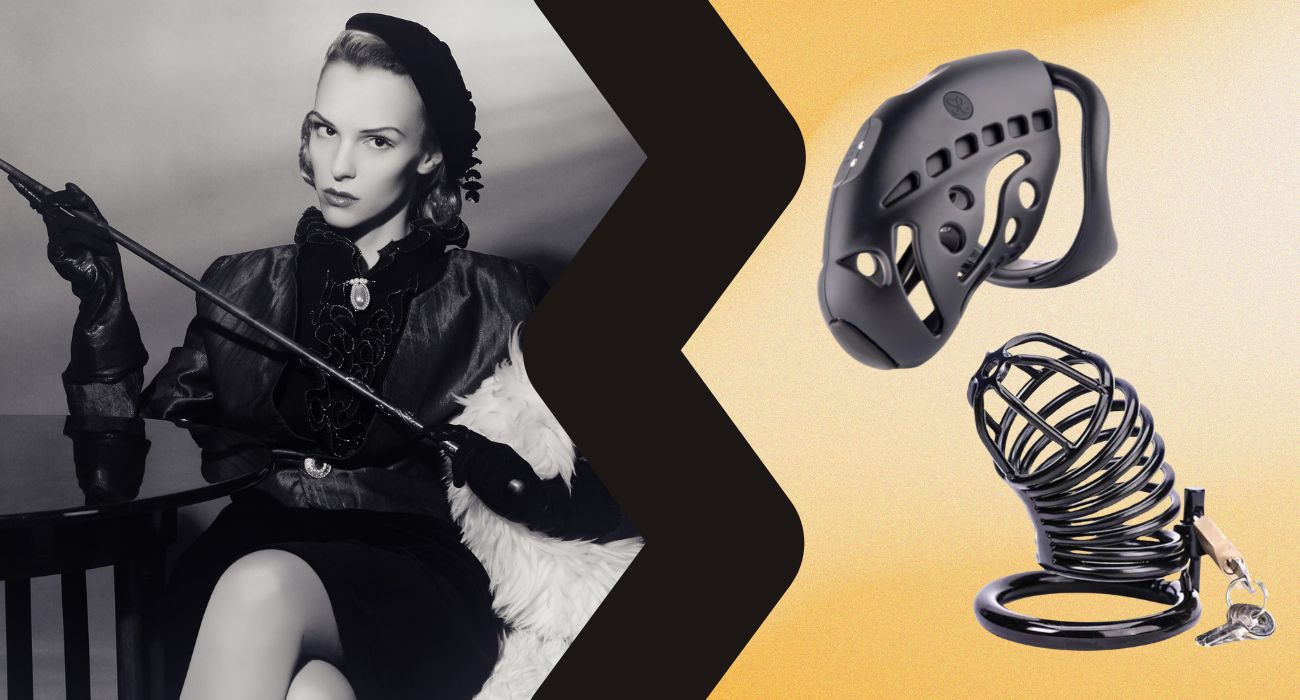Pet play BDSM has grown by a lot since it first appeared in the early 1900s and now plays a bigger role in kink culture. People choose different animal personas – some become puppies, kittens, or bunnies, while others take on wolf or pony roles. Each person finds their own way to express themselves in this ever-changing practice.
Pet play goes deeper than just wearing animal accessories or doing tricks. The practice lets people step away from their daily routines through “pet space” – a mindset that helps human worries fade into the background.
This piece covers everything about petplay, from simple concepts to practical tips that help beginners understand this fascinating part of BDSM culture.
What is Pet Play and why people enjoy this kink
Pet play BDSM stands out as a unique form of role-playing where people take on animal traits, usually within a dominance/submission dynamic. This practice differs from other BDSM activities because it creates a space where human concerns fade away and basic instincts take over. Research shows this practice emerged from the broader BDSM/leather community. More events and websites dedicated to this activity keep popping up [1].
The psychology behind pet play fetish
Pet play’s appeal goes beyond just acting like animals. People who practice this kink can escape from their everyday lives and adult responsibilities. Enthusiasts talk about “puppy headspace” as a state where they feel “simple” and “immediate.” They don’t overthink things during these moments [1].
Players can express themselves freely without society’s rules holding them back. Many see pet play as a way to stay present – they focus on physical activities and simple ways to communicate.
Research shows five main reasons why people get involved in pet play:
- Sexual pleasure and excitement
- A chance to relax and escape from daily life
- Adult play and physical activity
- Growing and showing who they really are
- Creating stronger bonds with partners and community [2]
These reasons vary from person to person. Some want sexual satisfaction while others care more about emotional release and community connections.
Common misconceptions about BDSM petplay
Even as people learn more about pet play, some wrong ideas persist. In stark comparison to this, pet play has nothing to do with bestiality or animal fetishism. Most players have zero sexual interest in real animals – their attention is drawn to power dynamics, role-play, and the mental aspects of becoming an animal character [3].
There’s another reason people get it wrong – they think pet play must be sexual. While many include it in sexual activities, some prefer non-sexual pet play. These players focus on relaxation, bonding, and having fun [4]. They find intimacy without any sexual activity.
People often think pet play always involves humiliation. Some pairs might include this, but others celebrate the pet’s character as something positive rather than shameful [3]. Everything depends on what the partners agree to do together.
Benefits of exploring pet play in relationships
Pet play can make relationships stronger beyond its mental benefits. Partners need to trust each other completely – the “pet” gives up control and becomes vulnerable. This creates deep bonds between partners.
Psychologists say pet play can be “the third” element in a relationship that opens up new ways for partners to connect [5]. Handlers learn to understand their pet’s needs without words, which builds deeper emotional connections.
Pet play helps reduce tension in relationships. Just like real pets can stop arguments between couples, taking on pet roles helps partners forget about fights and connect through shared affection [6]. They can try different ways to communicate and express needs they might not say otherwise.
Pet play is a great way to relax for people dealing with stress or anxiety. Players can forget about adult worries in a supportive space [1]. This makes pet play more than just a kink – it’s a comprehensive practice that helps mental health and relationship growth.
Common roles in pet play dynamics
Pet play BDSM experiences build on role dynamics that create structured interactions and deepen the satisfaction for everyone involved. Each role brings specific expectations, behaviors, and responsibilities that help achieve a meaningful power exchange. Newcomers can find their place in this unique community by understanding these dynamics.
Pets: The submissive role
The pet role represents the submissive side of pet play dynamics. These participants welcome animal characteristics and set aside human concerns to follow their instincts. Many discover freedom when they simplify their existence and act on instinct rather than overthinking.
Different animals express submission in unique ways:
- Puppies tend to be playful, loyal, and eager to please their handlers
- Kittens often embody independence, mischief, and selective affection
- Ponies frequently represent pride, strength, and trained discipline
Pets communicate through non-verbal sounds, body language, or simple responses instead of human speech. They find joy in receiving praise, physical affection, and rewards for good behavior. Animal headspace varies among individuals—some stay aware of their human identity, while others completely immerse themselves in their animal persona during play.
Handlers and owners: The dominant role
Handlers and owners balance the pet play dynamic as caretakers, authority figures, and guides. They create safe spaces where pets can express their animal sides fully. This role needs both attentiveness and leadership skills.
Good handlers mix nurturing with discipline, knowing their role involves caring for and guiding their pet. Their power stems from mutual consent—not inherent authority. They stay alert to their pet’s wellbeing and ensure physical safety, emotional security, and proper boundaries during play sessions.
Handlers often develop deeper empathy through their role. They learn to read non-verbal cues and respond to their pet’s needs. At the same time, they set rules and provide structure that helps pets feel secure in their submission.
Trainers and their responsibilities
Trainers teach pets specific behaviors, commands, and skills. Unlike handlers who focus on care and companionship, trainers emphasize discipline and skill development. They usually work with pets for short periods instead of forming permanent bonds.
Trainers who work well use positive reinforcement—rewards, praise, and encouragement shape desired behaviors. Training sessions might cover commands, social behaviors with other pets, or specific tricks and tasks.
Switching between roles
Pet play communities welcome role flexibility. Many participants enjoy different positions based on their context, partners, or mood. A person who usually acts as a pet might handle other pets in group settings. Similarly, a dominant who typically handles pets might explore their submissive pet side with trusted partners.
Switching lets people experience both sides of the power dynamic, which builds understanding and empathy. Players can explore different aspects of their personality and desires without getting stuck in one role.
Switchers say their dominant and submissive experiences help them perform better in both roles. The variety prevents boredom in long-term dynamics and keeps pet play experiences exciting.
Getting started with Pet Play: A beginner’s guide
Pet play needs careful preparation and good communication between partners, especially for newcomers. The trip starts with honest conversations and thoughtful planning, not expensive gear purchases. Partners should establish important groundwork before getting collars, tails, or specialized equipment.
Discussing boundaries and expectations
Pet play runs on clear communication and explicit consent. Schedule a dedicated talk with your partner about desires, limits, and expectations. This original negotiation should cover detailed information about physical touch priorities, roleplay scenarios, and intensity levels.
“Negotiating boundaries before engaging in pet play is essential. Partners should have an open and honest conversation about their boundaries and limits,” note experts in the field. To cite an instance, some participants feel comfortable with certain types of touch but not others.
Safewords are non-negotiable in pet play. Simple, memorable words like “RED” work best to indicate immediate stopping. Note that pets often communicate non-verbally while in headspace, so you need non-verbal signals as backup safety measures. To cite an instance, see:
- Three rapid taps anywhere on the body to indicate distress
- Shaking the head vigorously to signal “no”
- Moving away to request space
Consent goes both ways. Pets should establish boundaries, and handlers should clearly communicate their comfort levels with specific activities or training methods.
Creating a pet persona
Each participant’s animal persona choice becomes a unique personal trip. Take your time—many practitioners try different animals before finding their perfect match.
Try crawling around your home, making animal sounds, or copying behaviors that strike a chord with you to find what feels natural. Some people connect with puppy behaviors right away, while others might feel drawn to feline independence or equine grace.
Your pet persona can change. Pet play lets you grow and learn over time. As one experienced practitioner explains, “Your brain is where all of the pet play magic happens, and everything external is just there to nurture your brain.”
Starting without expensive gear
You don’t need elaborate gear to start learning about pet play. Many household items work well as substitutes while you figure out your interest level:
Kitten play works great with a simple cardboard box as a play space. People trying puppy play might start with squeaky dog toys from pet stores. A specific blanket can serve as your “pet bed” to create a dedicated space for pet dynamics.
You can buy specialized gear as your interest grows. Many people start with a simple collar—showing the relationship dynamic—before buying more elaborate accessories like tails, hoods, or specialized bondage equipment.
“While gear is not mandatory for pet play, it can substantially improve your pet headspace and experience,” note community experts. Your mindset matters more than what you wear.
Regular check-ins and aftercare practices help build a rewarding pet play dynamic based on trust, communication, and mutual enjoyment.
Essential Pet Play gear and equipment
Quality equipment plays a vital role in serious pet play experiences. Pet players and handlers need proper gear to deepen their exploration. The right equipment improves the experience and helps reinforce roles and headspace.
Collars and their significance
Pet play BDSM collars mean much more than simple accessories. A collar represents the commitment and relationship status between partners. Handlers or trainers present collars as “something deep and powerful” and “a solid representation of commitment” that everyone values deeply [7].
Partners should take time to think about the collaring process carefully. Expert practitioners stress that collaring works best with “mutual respect and a very high level of trust” between partners [8]. Different collar types serve unique purposes in many communities. Training collars help during learning phases, play collars work for specific scenes, and ownership collars show permanent relationships [9].
Tails, ears, and other animal accessories
Players can embody their animal personas better with tails and ears. Tail options range from plug-based designs that attach securely to belt-harness styles like the “Oxballs Tail Handler” for those who prefer non-insertable options [10]. Quality materials include faux fur for looks and silicone that lasts longer and cleans easily.
Players can choose from various ear styles. Options include neoprene hoods with attached ears, simple headbands, or full head coverings. The experience becomes complete with extras such as:
- Paw mitts that limit hand movement
- Muzzles or bone-shaped gags that reinforce behavior
- Special knee pads that help during long crawling sessions [11]
Comfort and safety considerations
Safety comes first with pet play equipment. Quality manufacturers test all materials for harmful substances and follow strict safety standards like ASTM, EN-71, or OEKO-TEX certification [12].
Hard-case luggage protects masks during travel. Soft clothing stuffed inside hoods helps maintain their shape [13]. Clean toys properly between uses to prevent hygiene issues, especially with shared equipment at social events.
Good padding makes extended play more comfortable. Knee pads protect joints while crawling, and well-fitted collars prevent skin irritation and breathing problems [11].
Entering and maintaining pet space
The mental change into a pet persona lies at the heart of pet play BDSM. Pet space or headspace lets participants leave their human constraints behind and tap into their animal instincts. This creates deep and immersive experiences.
Techniques for achieving headspace
Mental preparation and the right environment help you reach pet headspace. Your desires and expectations need careful thought before you begin this journey. Let go of your daily worries and work thoughts to stay focused on the present moment. Many people find that trigger words like “Good Boy” help their mindset change faster.
Physical elements are vital too. Pet gear, especially hoods or masks, can speed up the transition into pet space. The energy from others already in pet mode often spreads quickly. Group settings work best for newcomers who find it hard to achieve headspace.
Trust forms the foundation of this practice. Pet headspace makes you vulnerable, so you need to feel completely safe with handlers and others around you. One experienced practitioner says: “The more times I enter headspace, the easier and deeper I can go.”
Communication while in pet mode
Communication changes completely once you enter pet space. You need safewords before you start – both verbal (“RED” to stop immediately) and non-verbal (three quick taps anywhere to show distress). Handlers must watch for these signals carefully. Their responsibility grows as the submissive becomes more vulnerable.
Non-verbal cues become the main way to communicate. Pets might show they’re happy by “wagging” tails or jumping playfully. Handlers should stick to questions that need simple yes/no answers instead of complex thoughts that could break the headspace.
Aftercare practices specific to pet play
Coming out of pet space needs careful handling. Many people experience “sub-drop” – an emotional and physical crash after such an intense experience. Good aftercare combines physical comfort (blankets, water, snacks) with emotional support (kind words, cuddling, gentle touch).
Never rush the transition back. Some people use math problems or complex questions to help pets return gently to human thinking. Handlers should start conversations about the session afterward: what worked well? How do you feel now? These talks build trust and make future experiences better.
Conclusion
Pet play BDSM is a chance to learn about power dynamics, emotional connection, and personal freedom. What might seem daunting at first can be a great way to get both personal growth and relationship development opportunities. Pet play goes beyond just being a kink—it becomes a therapeutic outlet that helps relieve stress and lets people express their authentic selves.
Several factors determine success in pet play. Note that safe exploration starts with open communication and clear boundaries. Simple items work well for beginners, and they can add specialized gear as their comfort levels grow. The right approach to entering and maintaining pet space, along with proper aftercare, will give a positive experience to everyone involved.
Pet play works well for people who want sexual gratification, emotional release, or deeper connections with their partners. Communities keep growing and help newcomers with support and guidance. Pet play ended up being another genuine way for people to connect, express themselves, and find joy through consensual power exchange.
FAQs
Q1. What is pet play in BDSM? Pet play is a form of role-play where participants take on animal personas, typically within a dominance/submission dynamic. It allows people to temporarily escape human concerns and embrace simpler instincts and behaviors.
Q2. Is pet play always sexual? No, pet play isn’t always sexual. While some participants incorporate sexual elements, others engage in completely non-sexual pet play, focusing on relaxation, bonding, and playful aspects.
Q3. What are common roles in pet play? Common roles include pets (submissive), handlers/owners (dominant), and trainers. Pets often embody animals like puppies, kittens, or ponies, while handlers provide care, structure, and guidance.
Q4. How can beginners start exploring pet play? Beginners should start by discussing boundaries and expectations with their partner, creating a pet persona, and using simple household items before investing in specialized gear. Open communication and establishing safewords are crucial.
Q5. What is “pet space” or “headspace” in pet play? “Pet space” or “headspace” refers to the mental state where participants fully embody their animal persona. It involves letting go of human concerns and embracing animal instincts, creating a deeply immersive experience.
References
[1] – https://link.springer.com/article/10.1007/s10508-019-01476-1
[2] – https://pubmed.ncbi.nlm.nih.gov/31396755/
[3] – https://www.tumblr.com/galaxykitten16/140691836530/pet-play-misconceptions
[4] – https://www.bondesque.com/blogs/bondesque-blog/pet-play-101-the-beginners-guide-to-the-pet-play-k/
[5] – https://www.psychologytoday.com/us/blog/speaking-about-trauma/202201/does-your-pet-play-therapeutic-role-in-your-relationship
[6] – https://www.forbes.com/sites/traversmark/2024/02/05/3-ways-owning-a-pet-can-improve-your-love-life/
[7] – https://www.pupplay.info/2017/06/11/dont-rush-the-collar/
[8] – https://www.pupplay.info/2016/07/04/whats-it-like-to-collar-a-pup/
[9] – https://domrant.com/2015/02/the-importance-of-the-collar/
[10] – https://www.bondesque.com/bdsm/pet-play/
[11] – https://www.pupplay.info/2017/10/23/your-go-to-guide-for-unleashing-the-handler-within/
[12] – https://www.petplay.com/pages/safety?srsltid=AfmBOor1QEmGAiJya9Q4PGv-jlj9rAFsAq5mTE492x3EyhNDX3MddzMY
[13] – https://puppyplayexpert.com/how-to-pack-and-travel-with-a-pup-mask/?srsltid=AfmBOoqpYhhcKbJcPwTdAby9bQykM426pGaKmvuWodas7nGwisFRR6Zx













Leave A Comment